Find easy ways to improve Bluetooth speaker audio quality and clarity. Boost bass, adjust EQ and sound settings, and optimize placement for richer sound.
Table of Contents
- Understanding Bluetooth Audio Quality
- Optimize Your Device’s Sound Settings
- Use EQ and Bass Boost for Richer Sound
- Position Your Speaker for Best Performance
- Maintain Strong Connections and Power
- Update Firmware and Use Quality Sources
- Minimize Wireless Interference
- Conclusion and Quick Tips
- Frequently Asked Questions
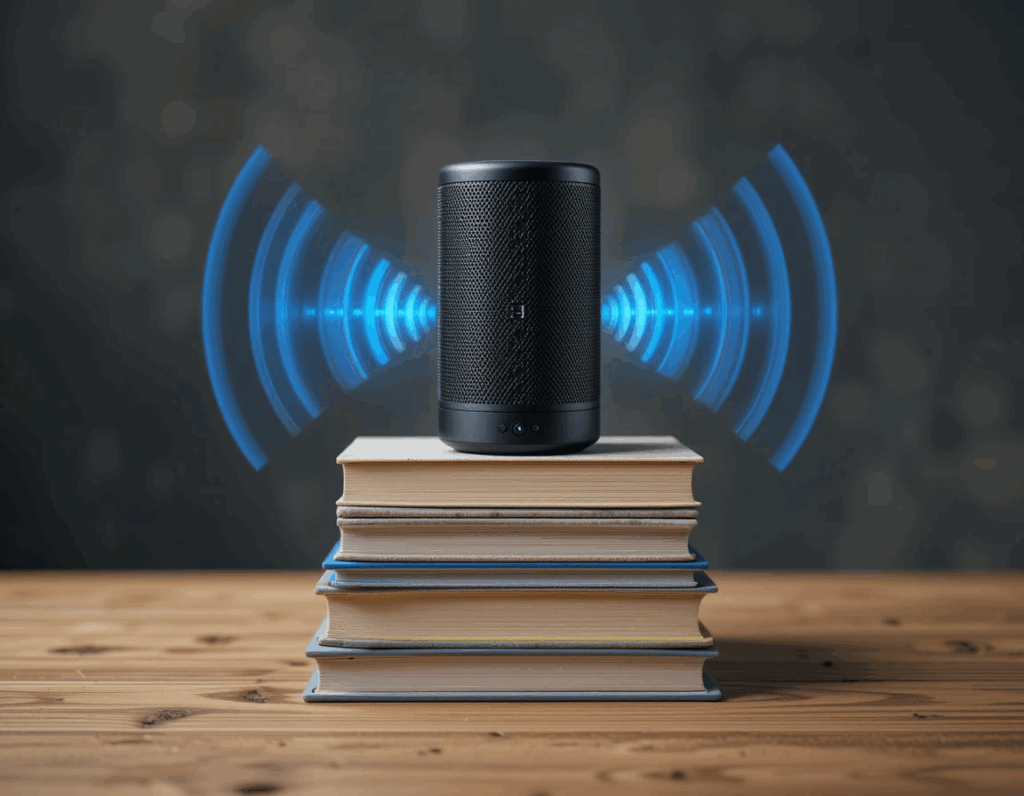
Understanding Bluetooth Audio Quality
Bluetooth speakers rely on wireless codecs to send audio from your device. The default codec (SBC) compresses sound, which can reduce audio clarity. Upgrading to higher-quality codecs can help. For instance, many Android phones support aptX or LDAC, and iPhones use AAC. These codecs transmit more data and preserve detail hifipicks.com As one expert guide notes, “enabling high-quality codecs (aptX, AAC, LDAC) on your phone can noticeably boost Bluetooth audio clarity hifipicks.com. In practice, check your phone’s developer or audio settings: select the highest-quality Bluetooth codec available.
In addition, use high-quality audio files or streams. Apps like Spotify or Tidal allow you to choose better bitrates. Streaming in “High Quality” mode or using lossless files ensures more sound data is sent, improving fidelity. (Some streaming apps even let you set separate audio quality for Wi-Fi vs. mobile data.) If possible, listen on Wi-Fi: mobile data connections sometimes throttle quality. For example, one guide notes that certain smartphones will reduce Bluetooth quality on cellular to save bandwidth stozzaudio.com.
Sound Check: In short, use the best codec and source you can. Enable aptX, AAC, or LDAC in your device settings hifipicks.com and stream from a high-quality audio source to maximize clarity.
Optimize Your Device’s Sound Settings
Your phone or computer’s audio settings play a big role. Many devices have built-in sound enhancements or equalizers. However, not all these features help in a Bluetooth context. As one tech source advises, try turning off extra audio effects (like surround sound, virtual bass, or loudness boosters) when using Bluetooth. These effects can sometimes interfere with the wireless signal and degrade quality hifipicks.com.
Instead, keep your output as “clean” as possible. On smartphones, disable any unnecessary DSP (digital signal processing) and set audio output to “standard” or “high quality.” Also check volume settings: ensure both your device and speaker volumes are up. Some speakers have independent volume controls, so you may need to raise speaker volume manually. For example, it’s common that “some speakers via Bluetooth do not allow you to control the volume using your source device… you have to use the included remote stozzaudio.com.
Another tip is to adjust any adaptive sound features. Many phones have “smart” EQ or adaptive sound profiles that try to adjust audio on the fly. These can be handy, but they sometimes make music sound dull. Experiment by toggling them off or on to see which sounds better. As one guide notes, manual adjustments often work best if auto-adjust features seem off hifipicks.com.
Quick Fix: Enable high-quality audio codecs (aptX, AAC, LDAC) on your device hifipicks.com, and turn off any built-in audio effects like virtual surround or bass boosts hifipicks.com. Then balance your phone/tablet and speaker volume levels for the best result.
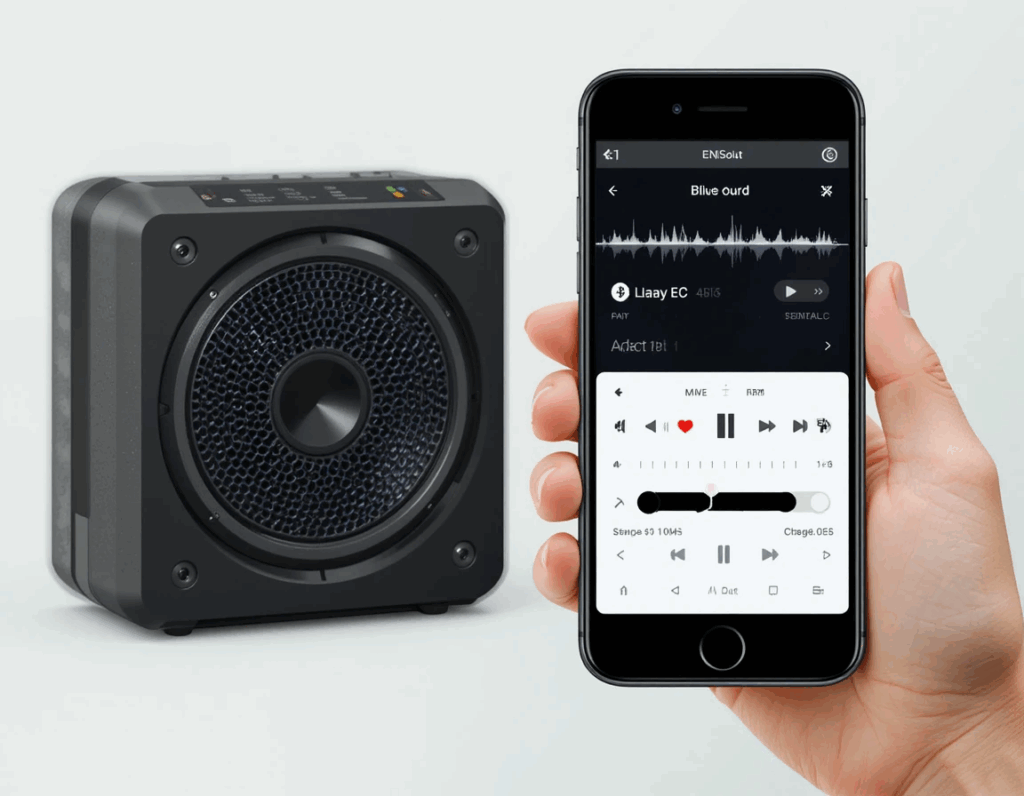
Use EQ and Bass Boost for Richer Sound
Most Bluetooth speakers (and many source devices) have an equalizer (EQ) or bass boost setting. Tweaking these can dramatically improve sound quality and clarity. If your speaker has a companion app or EQ presets, experiment with them. The goal is usually to increase either the bass or the treble to match your preference.
- Bring out the clarity: If vocals or instruments sound muffled, try raising the mid and high frequencies slightly. As SoundGuys explains, “play with EQ settings to bring clarity to muffled speech, or extra oomph to music by raising the bass soundguys.com. In practice, set bass moderate and boost mids/highs to hear details better.
- Boost the bass: To feel more thump, increase the low-end. Many speakers (especially small ones) have weak bass. Use an EQ to raise the bass band (often under 200 Hz). Some devices even have a special Bass Boost mode – turn it on if you want deeper, punchier lows. For example, Soundcore’s guide suggests using EQ or built-in bass-boost modes to strengthen low frequencies soundcore.com.
- Avoid distortion: Be careful not to overdo it. Too much bass can cause muddiness. One practical tip is to test your settings with a familiar track and listen carefully. If the sound gets fuzzy, dial back the boost.
If your speaker doesn’t have built-in EQ, you can often use an app on your phone. Many music apps let you adjust an equalizer for connected devices. Even your computer’s sound settings (like Dolby Atmos or standard EQ) can help. The key is to tailor the frequency balance to your room and music. Soft furnishings (carpet, curtains) absorb bass, so you might boost more when indoors metatronics.shop.
Pro Tip: Use a graphic EQ or preset app on your phone/PC. Try boosting 60–100 Hz a little for bass, and 2–5 kHz for vocal clarity. If there’s a “vocal” or “bass boost” preset, test those.
Position Your Speaker for Best Performance
Where and how you place your speaker can have a big impact. Proper placement improves both audio clarity and bass response:
- Flat, stable surface: Put the speaker on a level table or shelf, not on its side or upside-down (unless it’s designed that way). This gives the speaker’s drivers room to breathe. As experts note, speakers should be on a “flat and firm surface” and ideally at ear level metatronics.shop.
- Avoid corners (unless boosting bass): Corners can cause bass frequencies to build up and become muddy metatronics.shop. In general, keep the speaker a few inches away from walls if you want a clean sound. (However, if you crave extra bass, placing a speaker near a wall or corner can amplify low frequencies due to sound reflection soundcore.com.) Balance is key: too close to a corner, and bass booms uncontrollably.
- Room acoustics matter: Soft materials like curtains, sofas, and rugs absorb sound reflections metatronics.shop. A room with hard walls will sound “bright,” while a carpeted room will sound warmer. If the room sounds harsh, try adding a rug or cushions. Conversely, if it sounds dull, a bare floor or wall behind the speaker can add some liveliness.
- Line of sight: Keep the path between device and speaker clear. Avoid big metal objects or thick walls blocking the signal. Bluetooth can penetrate walls, but metal frames, large furniture, or even people can weaken the connection. For best wireless audio, point the speaker (and your device’s antenna) toward each other when possible.
Lastly, if you have a subwoofer or additional speaker, make sure they are well-placed too (subwoofer often goes near a wall, mains at ear level). While this guide focuses on single speakers, good stereo placement (left/right) can vastly improve sound stage.
Placement Hack: Move your speaker around while playing music, especially near different wall corners, to find where the bass and clarity are best metatronics.shop. Often the sweet spot is not obvious until you test it.
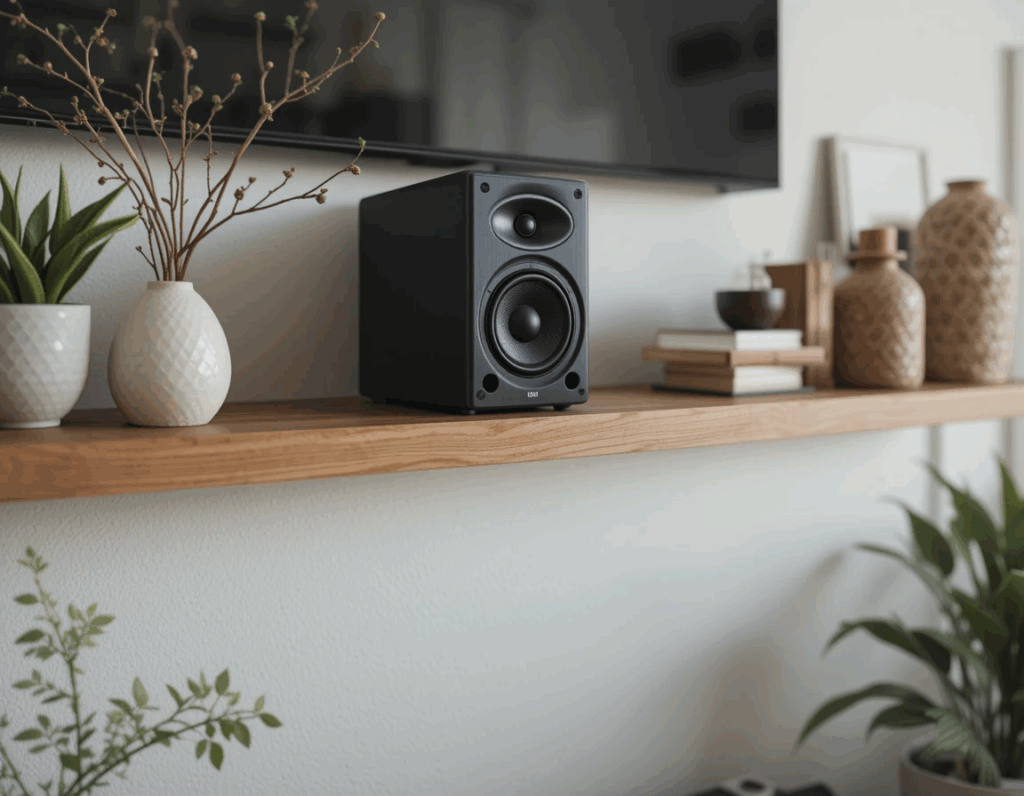
Maintain Strong Connections and Power
A weak Bluetooth connection or low battery can hurt sound quality. Here’s how to keep your audio signal strong:
- Re-pair if needed: If you hear crackling or dropouts, try turning Bluetooth off and on, or “forget” the device and pair again stozzaudio.com. Simple re-connection often clears glitches.
- Keep devices close: Bluetooth works best within ~30 feet (10 meters). For stereo sound or large rooms, keep the source (phone/laptop) within range of the speaker. Walls and floors reduce range.
- Check the battery: Low battery on either device can reduce output. Some battery-powered speakers lower volume or disconnect if power is low. As one guide notes, “low power on a battery system tends to decrease range” and can introduce noise stozzaudio.com. Always use a charged speaker or plug it in.
- Both volumes up: Set both your phone’s output volume and the speaker’s volume to high levels and then adjust to taste. If your speaker has physical buttons or a dial, max them first, then control loudness from your phone. Remember that some speakers ignore phone volume commands entirely, so double-check the speaker’s own volume setting stozzaudio.com.
- Alternate connections: If your speaker has other inputs (AUX, optical, USB), try them. A wired connection often yields higher fidelity because it avoids Bluetooth compression entirely. For example, using a USB or optical cable can allow higher bitrates (and even MQA on some systems) stozzaudio.com. Even plugging in an old headphone jack cable can give instant quality gains over Bluetooth. So when possible, consider wired mode for critical listening.
- Streaming quality: If you’re streaming music, check the app’s settings. Many services let you toggle audio quality to “high” or “extreme.” Also, prefer Wi-Fi over cellular for the highest bitrate. As noted earlier, some phones throttle audio on mobile data, so a Wi-Fi connection avoids that bottleneck stozzaudio.com.
Connectivity Tip: Remove any nearby wireless devices (microwave ovens, Wi-Fi routers on 2.4 GHz) that might interfere. A clear line of sight and fresh pairing often make Bluetooth audio crisp and stable.
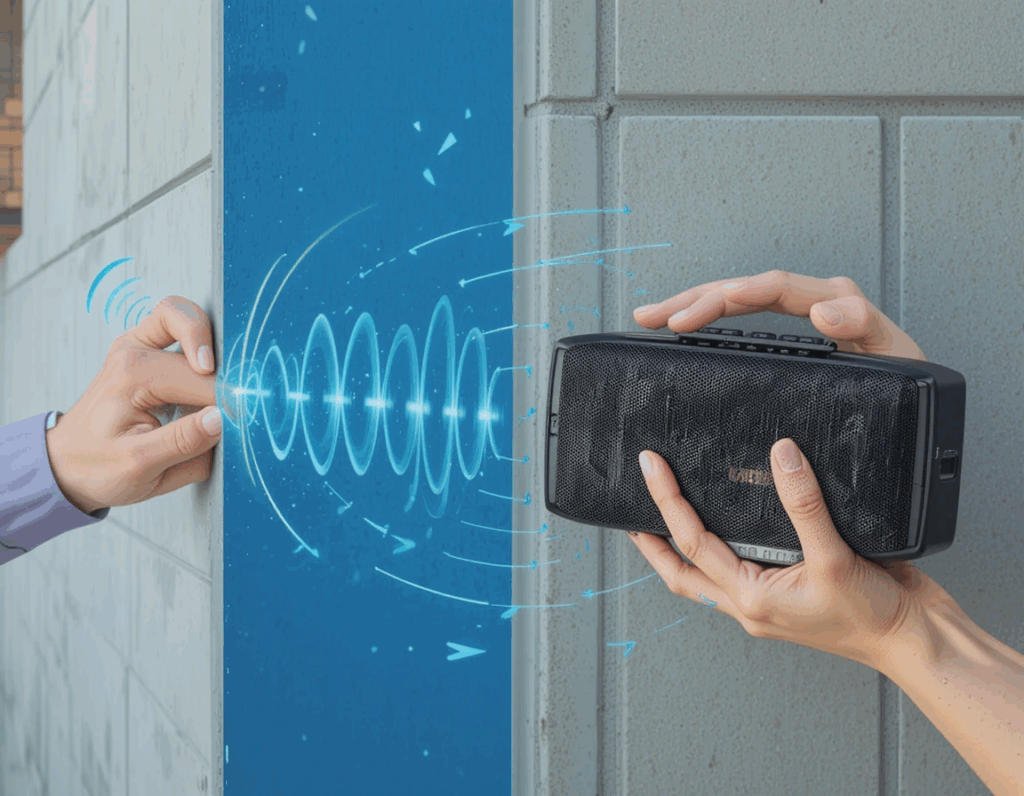
Read Next
How Do You Improve Bluetooth Speaker Sound Quality Easily? 2025
Update Firmware and Use Quality Sources
Believe it or not, software updates can improve your speaker’s sound. Manufacturers periodically release firmware updates that fix bugs and enhance performance. Similarly, smartphone or tablet OS updates often optimize Bluetooth drivers. One guide explains that updates “optimize audio performance” and improve codecs and connectivity hifipicks.com.
- Update your speaker: Check the manufacturer’s website or companion app for firmware updates. Not all speakers do this, but high-end models often do (e.g., smart speakers). Keeping firmware current ensures you have any audio tuning or bug fixes provided by the maker hifipicks.com.
- Update your phone/PC: Accept any Bluetooth or OS updates on your phone or computer. These updates can improve Bluetooth stability and audio quality over time hifipicks.comhifipicks.com. It’s a quick step that can yield noticeable differences.
- Use good audio content: While we said it before, it’s worth repeating: start with high-quality music or audio files. Listening to heavily compressed audio (like a very low-quality MP3) will always sound poor, no matter the speaker. Whenever possible, use at least 320 kbps MP3, or better yet, lossless formats (FLAC, ALAC) or high-bitrate streams.
In summary, keep all software up-to-date and feed the speaker good audio. These are often missed but effective steps.
Minimize Wireless Interference
Since Bluetooth is wireless audio, it can suffer from interference. Here are practical tips:
- Reduce distance and obstacles: We mentioned it above, but it’s key: stay within range and keep the speaker and source unobstructed. Even your own body can block the signal, so try to face the speaker with your phone in front of you.
- Limit other 2.4 GHz devices: Bluetooth shares spectrum with Wi-Fi and other gadgets. If your Wi-Fi router is also on 2.4 GHz and near the speaker, it can sometimes cause brief dropouts. Try moving either the speaker or router a few feet apart.
- Switch Wi-Fi bands: If possible, set your router to 5 GHz (if supported) so that 2.4 GHz has less traffic.
- Avoid crowded spectrum: In dense apartment complexes, many wireless devices compete. Sometimes turning off other Bluetooth devices (keyboard, mouse, headphones) reduces chatter.
- Update device drivers: On PCs, ensure your Bluetooth drivers are up-to-date. Old drivers may struggle with modern codecs.
While you can’t eliminate all interference, keeping Bluetooth use simple and clear helps a lot. As one source puts it, minimizing RF issues is key to “the best wireless audio possible.”
Wireless Audio Tip: If you still hear noise or dropouts, try playing audio from a different device. This isolates whether the speaker or the phone is the culprit. Also consider using a Bluetooth adapter (dongle) with a good antenna if on a PC.
Conclusion and Quick Tips
Improving your Bluetooth speaker’s audio is often about small tweaks: better settings, a charged connection, and smart placement. Here’s a quick recap:
- Use high-quality Bluetooth codecs (aptX, AAC, LDAC) hifipicks.com.
- Optimize EQ and boost bass for fuller sound
- Position the speaker on a flat surface, away from obstruction metatronics.shop.
- Check volume on both devices, and keep the battery charged stozzaudio.com.
- Disable phone audio enhancements and stream at the highest quality
- Update firmware on both phone and speaker to fix audio issues
- Try wired connections (AUX, USB, optical) when possible for even better audio stozzaudio.com.
By following these easy steps, your Bluetooth speaker can sound significantly better – tighter bass, clearer highs, and overall richer audio.
Enjoyed this guide? 🔗 Share this article with friends! For more audio tips, see our related article on home wireless sound systems or explore our audio technology blog. Feel free to leave a comment below or ask questions – we love hearing your feedback!
Frequently Asked Questions
Q: How can I boost the bass on my Bluetooth speaker?
A: Use the speaker’s EQ or bass boost mode. Many speakers and apps let you increase low frequencies. Placing the speaker near a wall or corner can also amplify basssoundcore.com, but avoid extreme corner placement as it can make bass muddy.
Q: Why is my Bluetooth audio choppy or cutting out?
A: This often means interference or low signal. Make sure your device is close to the speaker (within ~30 ft) and there are no large metal or concrete walls in between. Also check the speaker’s battery; low power can weaken the signal stozzaudio.com. Try re-pairing or use a different device to see if the issue persists.
Q: Does updating firmware really help sound quality?
A: Yes. Speaker manufacturers sometimes release firmware updates that refine audio processing or fix bugs. Updating both your speaker (via its app or website) and your phone/PC ensures you have the latest performance improvements hifipicks.com hifipicks.com.
Q: Can I use my phone’s EQ to improve the Bluetooth speaker?
A: Absolutely. If your phone or music app has an equalizer, you can tailor the sound for the speaker. For example, many phones have built-in EQ settings (or even Dolby Atmos) that you can adjust to your tastesoundguys.com. Just remember to experiment bit by bit and listen.
Q: Is a wired connection better than Bluetooth?
A: Generally, yes. A direct cable (AUX, optical, or USB) avoids compression, so you get higher fidelity. If your speaker and source allow it, using a cable can greatly improve clarity and bass punch stozzaudio.com. However, modern Bluetooth with aptX/AAC can sound very good, so weigh convenience vs. quality.
Q: How do wireless interference issues affect sound?
A: Interference can cause dropouts or noise. Since Bluetooth uses the busy 2.4 GHz band, nearby Wi-Fi or other devices can clash. Ensure minimal other devices are active, or switch your router to 5 GHz. Keeping your speaker away from other electronics also helps maintain clean wireless audio.
Q: Are some speakers just better by design?
A: Yes. Speaker quality (driver size, enclosure, power) sets an upper limit. But these tips ensure you’re getting the best from your speaker. If your speaker lacks bass by design, at least EQ and placement can partly compensate. And apps/updates can bring even modest speakers closer to their potential.
Q: What else can I try?
A: Explore smartphone “helper” apps. There are many equalizer or audio enhancer apps on iOS/Android that give finer control. Also, some audio interfaces (DACs) or Bluetooth receivers can improve quality if you need more. Remember: keep expectations realistic – a tiny portable speaker can’t match a stereo system, but these tweaks maximize what it can do.
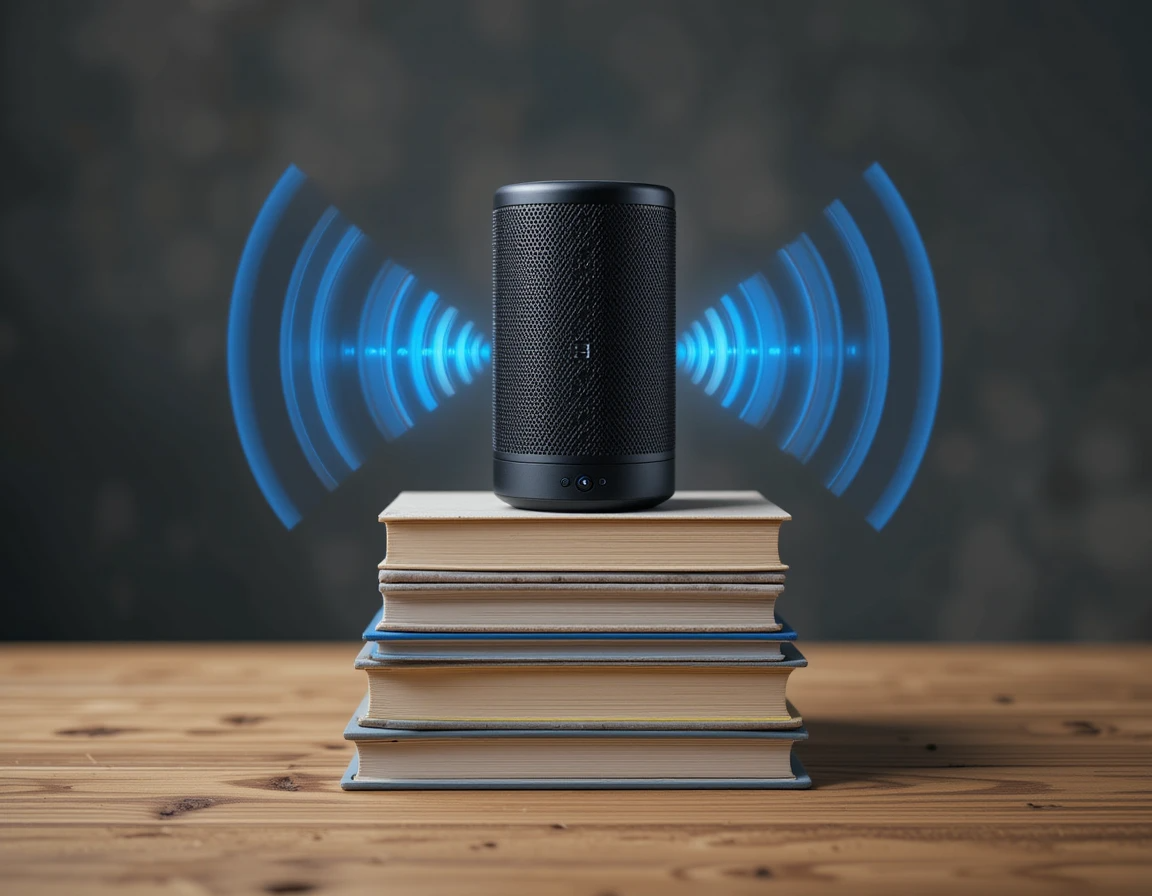


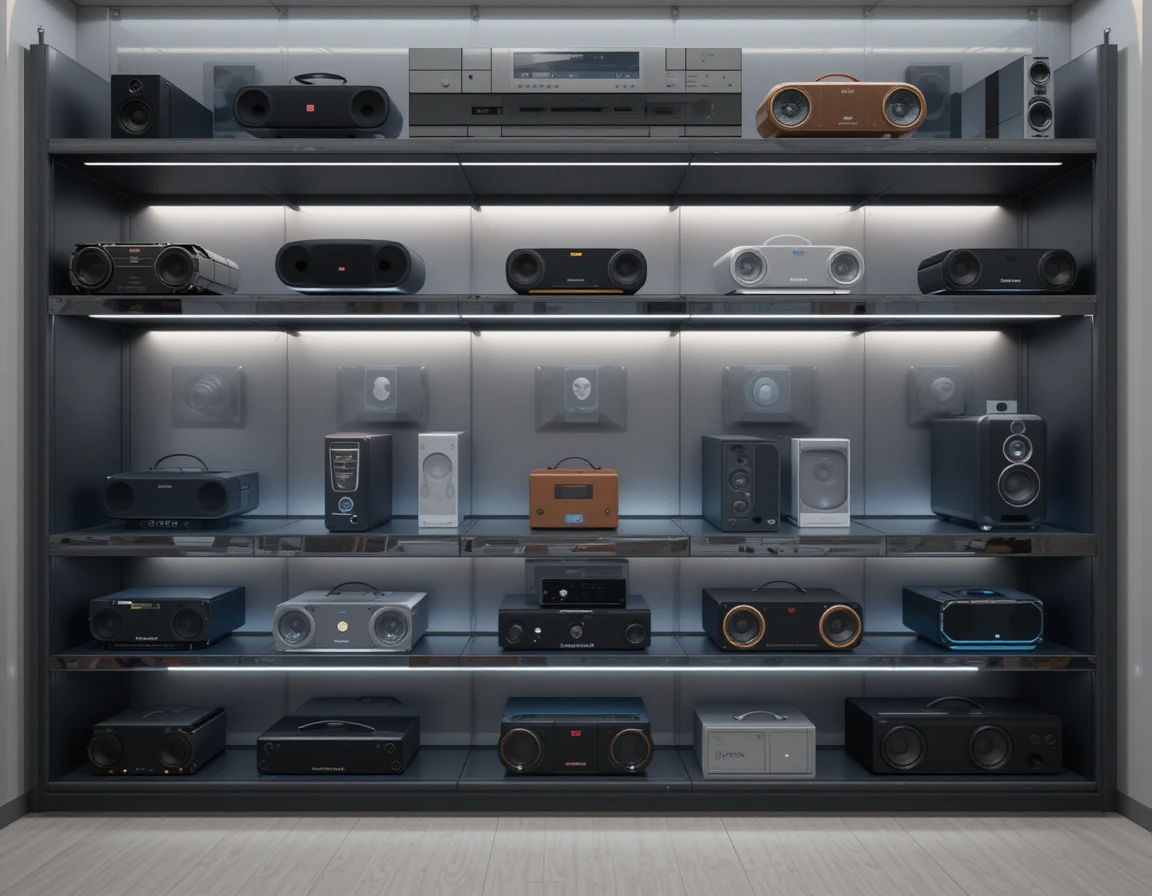

One thought on “Easy Ways to Improve Bluetooth Speaker Audio”